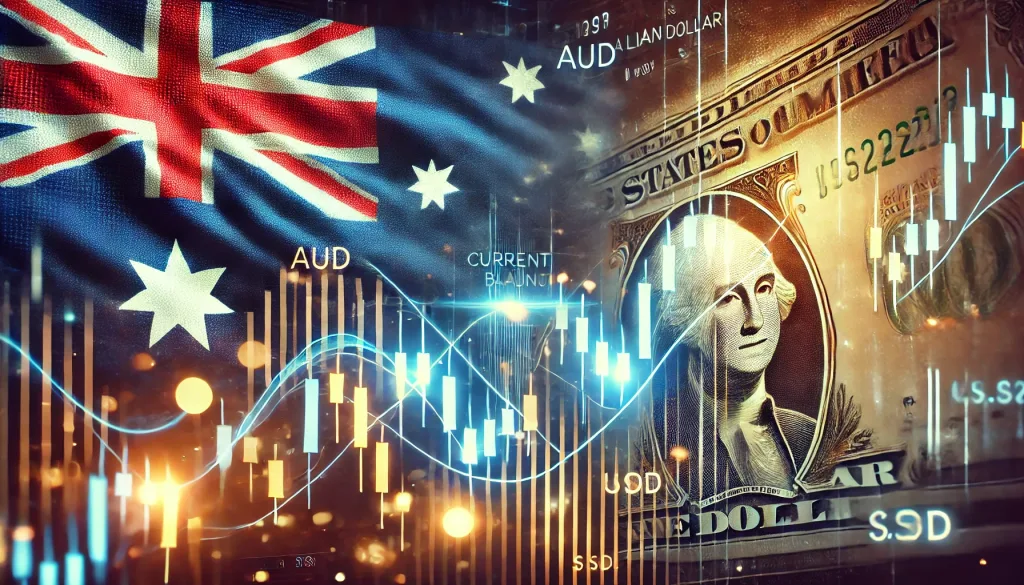The “Invisible Hands” Behind AUD/USD: How Current Account Balance Moves the Market

If you’ve ever wondered why the Australian Dollar (AUD) and the U.S. Dollar (USD) move like they’re in a complicated tango—sometimes smooth, sometimes stumbling—you’re not alone. One of the biggest yet overlooked influencers? The current account balance.
Why Most Traders Ignore the Current Account (And Why That’s a Big Mistake)
Let’s be real: when traders scan the economic calendar, they zero in on interest rate decisions, CPI, and non-farm payrolls. The current account balance? It barely gets a glance—kind of like reading the Terms & Conditions before clicking “Agree.”
But here’s the thing: the current account is a huge deal, especially for AUD/USD traders. It reflects the flow of goods, services, and investments between Australia and the rest of the world. More importantly, it hints at the underlying demand for AUD—something the pros use to stay ahead of the curve.
So, what’s the hidden formula behind this economic report? Let’s dive in.
The “Unseen Hand” That Moves AUD/USD
Think of the current account as Australia’s financial report card for global trade. A surplus means Australia is exporting more than it’s importing, which boosts demand for AUD. A deficit, on the other hand, means more AUD is being sold to pay for imports, which can put downward pressure on the currency.
But here’s the twist:
- A positive current account doesn’t always mean AUD will skyrocket.
- A deficit doesn’t always mean AUD will tank.
- The expectations of traders versus the actual data release play a massive role.
Game-Changing Insights from Past AUD/USD Reactions
Let’s talk numbers. In Q3 2023, Australia reported a current account surplus of AUD 11.3 billion—higher than expected. Logic would suggest that AUD/USD would have strengthened. But guess what? It barely budged.
Why? Because the market had already priced in strong trade data, and global risk sentiment was negative at the time. AUD, being a risk-sensitive currency, got overshadowed by broader market fears.
Contrast that with Q1 2022, when a weaker-than-expected current account sent AUD/USD tumbling. The difference? Traders were caught off guard, and stop-loss triggers caused a cascading selloff.
3 Little-Known Ways to Trade the AUD/USD Current Account Release
1. Follow the Smart Money Before the Release
Big institutional traders often position themselves days in advance of a key economic release. Tracking open interest in AUD/USD futures and options can give clues about sentiment.
???? Ninja Tactic: Use the Commitment of Traders (COT) report to gauge if hedge funds are loading up on AUD longs or shorts before the announcement.
2. The “Missed Expectations” Play
Forget just looking at the raw number—focus on how much it deviates from forecasts. If the reported current account is significantly different from market expectations, expect an outsized reaction.
???? Secret Insight: If the deviation is greater than 20%, AUD/USD tends to move at least 30-50 pips within the first hour post-release.
3. The 24-Hour Delayed Reaction Trick
Most traders react instantly, but the biggest moves often happen the next day when analysts have time to digest the implications.
???? Pro Move: Monitor bond yield spreads between Australian and U.S. government bonds. If spreads widen post-release, it’s often a sign that AUD will continue in the same direction as the initial move.
What’s Next for AUD/USD? 3 Key Trends to Watch
1. China’s Demand for Australian Exports
Since Australia is heavily reliant on exporting iron ore and commodities, any slowdown in China can weaken AUD/USD. If China’s economy falters, even a positive current account won’t save AUD from bearish pressure.
2. The Fed’s Interest Rate Path
Higher U.S. rates attract capital inflows into USD-denominated assets, making USD stronger. Even if Australia’s current account is strong, a hawkish Fed can offset AUD gains.
3. Australian Inflation and RBA Policy
If the RBA signals tighter monetary policy due to strong economic data, AUD/USD may rally. But a dovish stance could spell weakness, even with a positive current account.
Final Takeaway: How to Stay Ahead of the Herd
Most traders react to news; the best traders anticipate it. By understanding how the current account influences AUD/USD, you gain an edge that 90% of retail traders overlook.
Want to get real-time insights and exclusive trading strategies? Check out StarseedFX’s free resources:
???? Latest Forex News & Indicators – Stay ahead of the game
???? Advanced Forex Courses – Master elite trading strategies
???? Smart Trading Tool – Optimize your trading decisions
—————–
Image Credits: Cover image at the top is AI-generated
PLEASE NOTE: This is not trading advice. It is educational content. Markets are influenced by numerous factors, and their reactions can vary each time.

Anne Durrell & Mo
About the Author
Anne Durrell (aka Anne Abouzeid), a former teacher, has a unique talent for transforming complex Forex concepts into something easy, accessible, and even fun. With a blend of humor and in-depth market insight, Anne makes learning about Forex both enlightening and entertaining. She began her trading journey alongside her husband, Mohamed Abouzeid, and they have now been trading full-time for over 12 years.
Anne loves writing and sharing her expertise. For those new to trading, she provides a variety of free forex courses on StarseedFX. If you enjoy the content and want to support her work, consider joining The StarseedFX Community, where you will get daily market insights and trading alerts.
Share This Articles
Recent Articles
The GBP/NZD Magic Trick: How Genetic Algorithms Can Transform Your Forex Strategy
The British Pound-New Zealand Dollar: Genetic Algorithms and the Hidden Forces Shaping Currency Pairs
Chande Momentum Oscillator Hack for AUD/JPY
The Forgotten Momentum Trick That’s Quietly Dominating AUD/JPY Why Most Traders Miss the Signal
Bearish Market Hack HFT Firms Hope You’ll Never Learn
The One Bearish Market Hack High Frequency Traders Don't Want You to Know The

